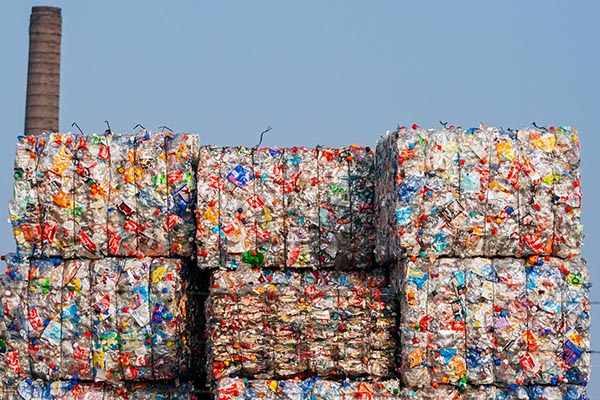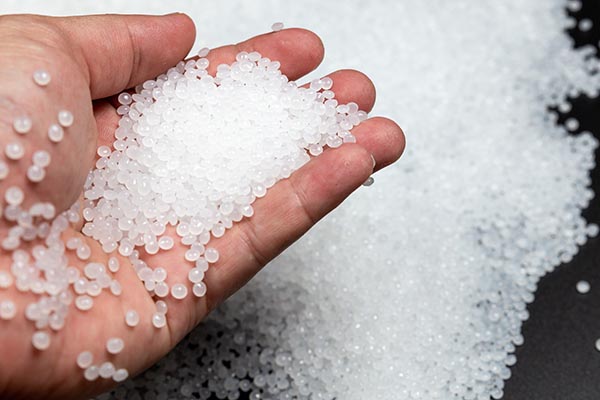As the world becomes increasingly concerned about the climate crisis, the use of petroleum-based products, and the proliferation of plastic waste—both in landfills and elsewhere—plastic packaging has been in the center of the discussion. To gain a better understanding of how recycling is affecting this issue with the potential of bringing some level of sustainability to plastic packaging, I spoke with Kara Pochiro, the Vice President of Communications and Public Affairs at the Association of Plastic Recyclers (APR). As the international trade association representing the plastics recycling industry, membership in the Association includes independent recycling companies of all sizes, processing numerous resins, as well as consumer product companies, equipment manufacturers, testing laboratories, organizations, and others committed to the success of plastics recycling.
The ultimate goal, of course, would be to reach a state where the vast majority of plastic materials are recycled for use in place of virgin feedstocks in a circular economy model. We are a long way from that state of affairs, but the progress being made, both in adoption and in technology, is encouraging.
WhatTheyThink: What are some of the differences in plastic recycling between Europe and the U.S.?
Kara Pochiro: It would seem that there is more plastics recycling in Europe than in the U.S., largely because Europe has a lot more legislation passed that makes recycling mandated. Typically, recycling has been a state and local issue in the United States, but we are seeing legislation passed, which is great. California has been the bellwether state, taking the lead in passing legislation that can affect recycling and other environmental issues. Then we see a lot of other states follow suit, which could boost recycling rates, including mandated use of recycled content and Extended Producer Responsibility (EPR) programs. EPR programs have been around for quite some time in Europe and Canada. We are also starting to see some action on a Federal level that can affect recycling in the United States.
WTT: So it is sort of two-pronged, then—asking manufacturers to used recycled feedstocks as well as putting in place more ways to have the waste recycled, even at the consumer level.
KP: Right. Participation is key, and it is tough in the United States. We have so many different types of recycling programs. Different municipalities take different types of materials, and it can be confusing. We are working on programs that can streamline recycling programs across the United States, and we also work with The Recycling Partnership. They do a lot of work directly with communities, and one of their goals is to streamline programs to help alleviate that confusion.
WTT: You mentioned the importance of using recycled feedstocks. How do you encourage that?
KP: At the core of what we do is promote design for recyclability. We want consumer brands to understand that they are their own raw material suppliers in a circular economy. If they design recyclable packaging, recyclers can then process that material into recycled resin for new packaging. We were the first plastics-related organization in the United States to publicly support mandated content, and we also have a program called the APR Recycling Demand Champion Campaign to drive end-market demand for post-consumer resin (PCR) and recognize companies for their increased investment in PCR-containing products. Of course, we want people to recycle, but we also want them to buy products that are made with recycled content. When consumers do that, it gets the message to consumer brands as manufacturers that it’s important to consumers.
WTT: In terms of curbside recycling, I know some areas have separate bins for different types of recyclables, and some don’t.
KP: Yes. Those that don’t, it’s called single-stream recycling. And that’s the most common type of curbside recycling collection. Some people like it, some people don’t. It can lead to more contamination in the recycling stream, but it can also increase supply. I think single-stream is here to stay.
WTT: So obviously that requires sorting. Can you explain what a typical sorting facility would look like?
KP: If we are talking single-stream recycling, everybody throws all their different recyclables in the single-stream bin or cart, including paper, cans, all different types of plastic, things like that. Typically, you should not put plastic bags, wraps, and films in the bin. In the United States, these can be taken back to a local retailer to recycle. Once the material in the curbside cart or bin is collected, it’s taken to a Material Recovery Facility (MRF), and that’s where everything is sorted by larger categories: paper, cardboard, aluminum, plastics, etc. And then if you're speaking specifically to plastics, your typical MRF will sort out the different types of plastics using near infrared sortation. Typically, they sort out Polyethylene Terephthalate (PET), High Density Polyethylene (HDPE), and Polypropylene (PP). The rest of it is baled into mixed plastics. The sorted bales will then be sold to reclaimers that process the material to make it into pellets, which are then sold to manufacturers and are typically mixed with a virgin resin to make a new package or product.

Bales of sorted plastics.
WTT: In Europe, they have a tethered closure requirement to keep caps and closures from littering the landscape, so to speak. How does that affect the recycling stream?
KP: We encourage people to leave their caps on the containers if they want them to get recycled because if they aren’t on the container, when they go to that sorting facility, the MRF, they’re too small to get recycled and they just end up in the landfill. But if they’re on the bottle or container, they will be recycled, even if they are a different material. When the material gets processed at the reclaimer, they have a float tank where certain types of plastic float and certain types of plastic sink. So that’s how they separate the different kinds.

Reclaimer facility for recycling plastics.
WTT: Are there plastics you don’t recommend putting into the recycling stream?
KP: Yes. A lot of packaging offers instructions about how to recycle, or if certain parts of the package are not recyclable. A good example is a plastic package that may contain metal components, like pumps and sprayers. Those can cause problems in the recycling stream, contaminants that are hard to sort out and can cause damage to recycling machinery. We are pleased to see significant progress in the design of pumps and sprayers. Companies have stepped up to the plate to eliminate metal components in plastic pumps and sprayers so many are now recyclable.
WTT: As I understand it, a big part of what you do is help brands and manufacturers understand how to design for recycling.
KP: Yes, we have developed the APR Design® Guide for Plastic Recyclability or the various types of plastic packaging and components. The APR Design® Guide includes a variety of test protocols and Recognition Programs. for plastic products and packaging, including Meets Preferred Guidance, Critical Guidance and Responsible Innovation. This gives them recognition for their efforts in increasing recyclability and driving toward a more circular economy.

Plastic pellets ready for reuse in a circular economy model.
How You Can Help
If you are concerned about sustainability and mitigation of the effects of plastic waste, we encourage you to check out the Association for Plastics Recycling and support their important work.










Discussion
Join the discussion Sign In or Become a Member, doing so is simple and free